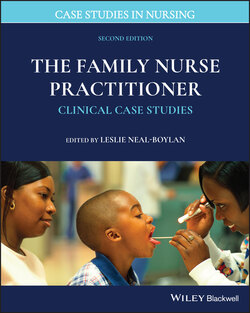Читать книгу The Family Nurse Practitioner - Группа авторов - Страница 10
Preface
ОглавлениеThe purpose of this book is to help clinicians and students better understand how to diagnose and manage typical (and some atypical) patient cases. While the focus is on the nurse practitioner role, this book will be useful to other patient care providers, such as physicians and physician’s assistants. The contributing authors have worked hard to update cases from the first edition of this book to better reflect patient‐centered language and advances in care. We have developed several new cases, such as one on climate change, to assist clinicians with scenarios that were not as predominant as they are today.
We have presented a variety of patients in these cases with regard to age, gender identity, socioeconomic status, family status, and other considerations. However, please don’t hesitate to alter these demographics to tailor the cases for your specific needs.
The contributing authors in this book are all subject matter experts. They have written these cases from real life. Consequently, the cases do not result in cookie‐cutter solutions. Critical thinking questions encourage the reader to think carefully about the case as presented and about potential resolutions to the case given variations that occur in real life. These cases should be used to jump‐start conversations among students, faculty, and clinicians regarding possible treatment options depending on the individual patient. All cases include the most current research and guidelines for treatment.
The cases are presented chronologically from pediatric to adolescent to adult and older adult. Cases in women’s health and men’s health have their own separate chapters. Mental health cases are now in a separate chapter.
For this second edition we moved the case resolutions to the end of the book. The best use of the book is to read and analyze the case, alter the demographics of the patient to view the case from multiple perspectives, and then review and discuss the resolutions. Keep in mind that there is typically more than one way to treat a patient and patients should always be diagnosed and treated on an individual basis, so there is often more than one possible resolution to a case. We have only included one resolution per case in this book.
